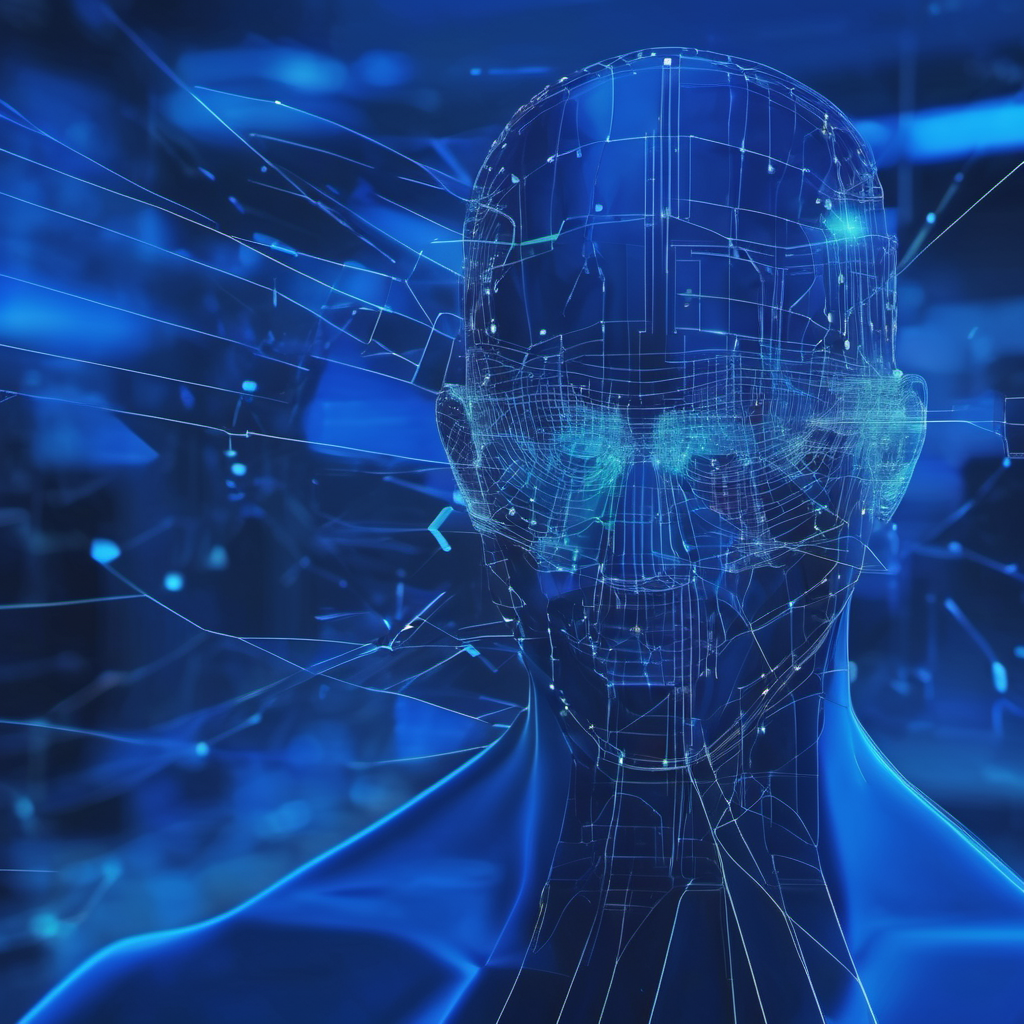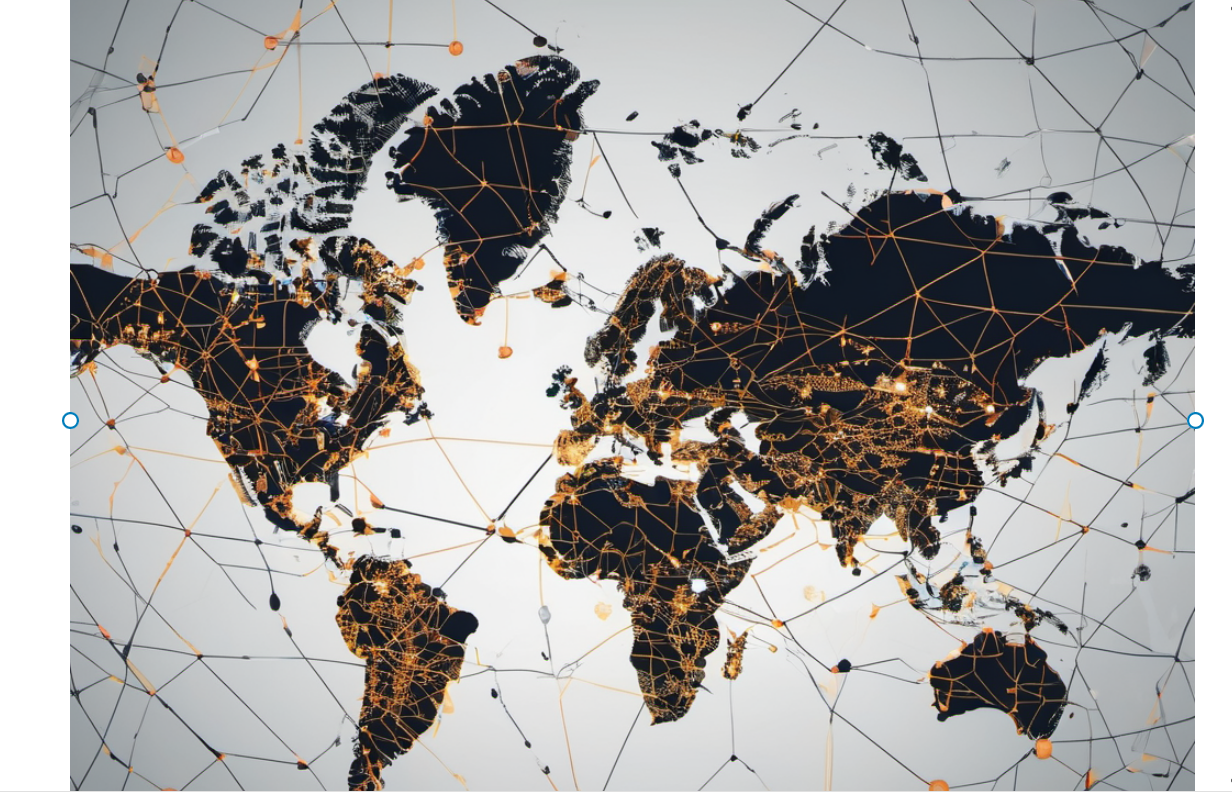In this article “The Digital Battlefield: Unmasking Evolving Cybersecurity Threats” you can read about AI, digital threats, automation problems, cybersecurity trends in 2024. In an age dominated by digital landscapes, the advent of Artificial Intelligence (AI) revolutionized the way we live, work, and connect. While AI brings forth unprecedented opportunities for innovation and efficiency, it casts a looming shadow over the realm of cybersecurity.
This article delves into the dynamic interplay between AI, cybersecurity, and automation. Unraveling the intricate tapestry that binds innovation, protection, and the ever-present challenge of staying one step ahead in an increasingly complex and automated digital landscape.
AI and Cybersecurity
As our reliance on technology deepens, the intersection of AI and cybersecurity becomes a critical focal point. Where the promise of progress collides with the ever-evolving landscape of cyber threats. This article delves into the intricate dance between AI and cybersecurity. Exploring the challenges, vulnerabilities, and the relentless pursuit of safeguards in the face of emerging digital perils.
Welcome to the forefront of the digital battlefield, where the stakes are high. The guardians are racing against the unseen forces that lurk in the vast expanse of the virtual realm.
Traditional Top 10 cybersecurity threats
This list is based on common and persistent challenges that organizations and individuals face in the realm of cybersecurity. These threats identified through ongoing analysis of cybersecurity incidents, trends, and emerging risks in the field.
- Phishing Attacks: deceptive attempts to trick individuals into divulging sensitive information.
- Ransomware: malicious software that encrypts data, demanding payment for its release.
- Distributed Denial of Service (DDoS) Attacks: overwhelming a system with traffic to disrupt normal functioning.
- Insider Threats: malicious actions or negligence from within an organization, posing a risk to data security.
- Zero-Day Exploits: attacks targeting vulnerabilities unknown to software developers.
- IoT Vulnerabilities: security gaps in Internet of Things devices can exploited for unauthorized access.
- Credential Theft: unauthorized access through the compromise of usernames and passwords.
- Man-in-the-Middle Attacks: interception of communication between two parties, often for data manipulation.
- Malware: malicious software designed to harm or exploit systems, including viruses, worms, and trojans.
- Supply Chain Attacks: exploiting vulnerabilities in a system’s supply chain to compromise its security.
The landscape is dynamic, and the list reflects a combination of traditional threats. This compilation designed to provide a concise overview of prevalent cybersecurity concerns that merit attention and proactive measures in safeguarding digital assets.
Categories of cybersecurity threats
Insider Attacks
- Definition: involve individuals who authorized access to an organization’s systems, networks, or data. Use that access to intentionally harm the organization’s interests.
- Characteristics: these attacks can carried out by both malicious insiders (employees with harmful intent) and negligent insiders (employees who unintentionally compromise security). Insider attacks include data theft, fraud, sabotage, or any intentional act that undermines the organization’s security.
Outsider Attacks
- Definition: also known as external attacks. Involve individuals or entities who do not have authorized access to the organization’s systems but attempt to breach security defenses from outside.
- Characteristics: often associated with external threat actors such as hackers, cybercriminals, or state-sponsored entities. These attacks can take various forms, including phishing, malware infections, denial-of-service attacks, and exploiting software vulnerabilities. The primary goal is to gain unauthorized access, steal sensitive information, or disrupt normal business operations.

New threats on the cybersecurity landscape
Novel threats
As we navigate this complex terrain, the amalgamation of advanced technologies promises unprecedented efficiency and innovation. Yet simultaneously introduces a host of novel threats that demand our attention.
This paragraph explores the cutting edge of cybersecurity, unveiling the top 10 threats in the realm of AI and automation.
From sophisticated AI-driven attacks to vulnerabilities inherent in automated systems, each threat poses a unique risk to the fabric of our interconnected digital existence.
Expanding awareness
Even if we do not know about cybersecurity threats they are still exist in today’s world. Better to hear about them then say sorry later. So not caring and knowing will not help any of us when any precedent happens on the digital landscape. Expanding awareness could help to prepare with tools and techniques to avoid these new and modern world cybersecurity threats.
Complexity
Join us as we unravel the complexities of this dynamic interplay. Shedding light on the emergent dangers that underscore the urgency of fortified defenses in our rapidly advancing technological landscape.
Novel Top 10 cybersecurity threats
In the ever-evolving landscape of digital security, the confluence of Artificial Intelligence (AI), cybersecurity, and automation birthed a new frontier fraught with unprecedented challenges.
Adversarial Machine Learning
Manipulating AI models by introducing malicious inputs to deceive their decision-making processes.
Model Inversion Attacks
Exploiting vulnerabilities to reverse-engineer AI models and gain insights into sensitive data used for training.
Privacy Violations
AI systems may inadvertently disclose sensitive information through the analysis of data, posing privacy threats.

AI-Enhanced Phishing
Leveraging AI to craft more convincing and targeted phishing attacks, increasing the likelihood of successful breaches.
Automated Social Engineering
Utilizing automated tools to manipulate human behavior and extract sensitive information.
Deepfake Technology
Creating realistic, AI-generated audio and video content for deceptive purposes, including impersonation and misinformation.

Bias and Fairness Issues
Discriminatory outcomes in AI decision-making due to biased training data or algorithms, leading to ethical and legal concerns.
Orchestrated Attacks on Automated Systems
Coordinated efforts to compromise interconnected automated systems, potentially causing widespread disruptions.
Lack of AI Security Standards
the absence of universal standards for securing AI systems leaves them vulnerable to exploitation. Emphasizing the need for standardized security practices.
Data Poisoning
Corrupting training data to compromise the performance and reliability of AI systems.
You have to be very careful when training an AI model and always ask WHERE THE DATA COMES FROM? Testing should be carried out what the model has been trained on.
For example:
If you use data from forums and on those forums people write a lot about biased information about the reality then the trained AI will be biased too. Imagine you use an AI to train on publicly available data. The model has a lot of answers regarding mental health topic. Then the AI might be biased regarding the mental health awareness topic. The same could happen with other topics, which is why there sould be a NOTE always.
This NOTE should alert people that using an AI model can give biased reality. Using the model not alter or replace critical thinking.
Case Studies
Case study I. – Something is wrong on the internet
James Bridle, a writer and artist focused on technology and culture, expressed his deep concerns in 2017. The concerns about disturbing content on YouTube targeted at children.
He highlights the oddities in children’s videos, such as the
- Surprise Egg craze and nursery rhyme videos,
- explores the automated and algorithmic processes behind their production.
Next to this Bridle points out instances where
- violent and inappropriate content mixed with familiar children’s characters,
- raising questions about the exploitation of children through online platforms.
He argued the system itself is complicit in this abuse.
He called for responsibility and action from YouTube and Google to address the issue. Bridle emphasizes the broader implications of such infrastructural violence affecting society and kids as a whole. Here you can read more about his concerns.
Case study II. – The threats of AI and Social Media
In this video Elon Musk spoke about the threat of Social Media and AI. Why is it good to delete it. Since Social Media can make you feel sad, where the world is fake and everyone seems happy.
In the second part Elon Musk speaks about how dangerous AI can be.
Trends and threats in cybersecurity and AI in 2024
IBM Distinguished Engineer spoke about trends regarding cybersecurity in 2024 for examples:
Passwords will be replaced with passkeys
The term “passkey” is sometimes used to refer to a small device, like a USB key. That can used for two-factor authentication or other security purposes. In this case, it’s not about being inherently more secure than a password but providing an additional factor for authentication.
To protect against AI-based phishing emails, users should remain vigilant. Users need to avoid clicking on suspicious links, and regularly update and strengthen their passwords or passkeys.
Additionally, organizations need to implement security measures for example email filtering, employee training, and monitoring for unusual account activities.
Increased use of deepfakes (voice, image, impersonation)
For example someone call someone else and want money and the other person believe because of the voice. The threat is that even phone numbers can used by others. Which is why if you think your number used then you need to change it as soon as possible.
Building security measurements around deepfake technology needs to be done on the large scale.
Symbiosis of AI and Cybersecurity
- AI need to do a better job in cybersecurity. AI needs to used in cybersecurity to secure generative AI and other AI model, to make them more trustworthy.
The problem of “Hallucinations”
- “Hallucinations” is when generative AI give people information. The information is not right, and people decide based on that kind of “hallucinations”.
RAG (Retrieval augmented generation)
Retrieval augmented generation involves fine-tuning the results of a large language model. By having it consult a trusted knowledge base beyond the information it learned during training.
Large Language Models (LLMs) are super-smart machines. Trained on massive amounts of data. Using loads of parameters to come up with original content for tasks. For example answering questions, translating languages, and filling in sentences.
RAG boosts LLMs abilities to handle specific topics or organization’s internal knowledge without requiring a full retraining of the model. It’s a cost-effective way to enhance LLM performance, ensuring it stays relevant, precise, and valuable across different situations.
Due to this RAG (retrieval augmented generation) technology needs to be better and better. To help and make generative AI more accurate and less likely to make people “hallucinate”.
